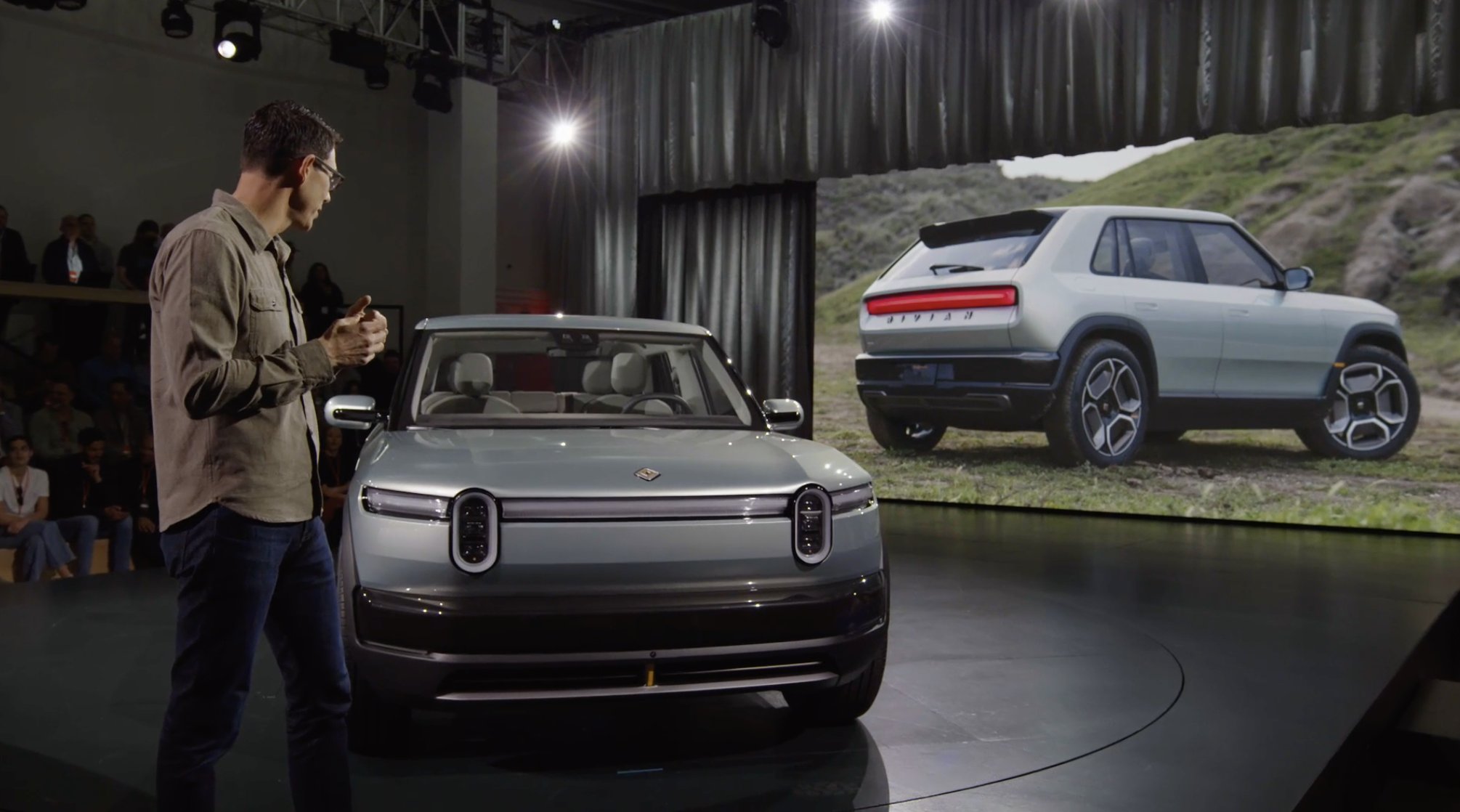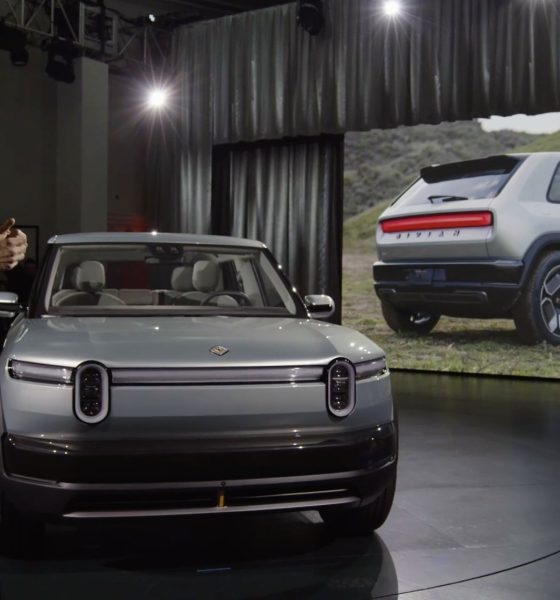

News
Rivian unveils R3 and R3X following launch of R2
Rivian unveiled two additional vehicles following the launch of the highly-anticipated R2, as it rolled out the R3 and R3X.
The R3 and R3X, which is the Performance configuration of the R3, came as an unexpected surprise for viewers as CEO RJ Scaringe explained the changes it had made for the R2 from the R1 platform. Nobody expected Rivian to roll out another vehicle and show off its high-end, performance-geared edition, as well.
Rivian R2 unveiling: Features, specs, price, release date revealed
The R3 is an even more compact version of the R2 and is slightly similar in looks to 1980s-era rally vehicles. Its small, compact design is coupled with a hatchback-style rear door that features multiple entry points for more cargo space, especially for long, outdoor items like surfboards and skis.
R2 is just the beginning. Say hello to R3. pic.twitter.com/zHaWUOE7vP
— Rivian (@Rivian) March 7, 2024
Rivian kept most of the introductory details of the R3 and R3X, like price, specific performance specifications, and availability, under wraps. The R2 is, without a doubt, taking priority for Rivian moving forward due to its low price and potential to bring the automaker toward a more stable financial situation.
Despite the lack of key specs, Rivian was sure to detail the inspiration for the R3, and it appears rally vehicles were exactly what the company was after when the vehicle came to fruition:
R3X is a rally-inspired crossover designed for whatever you throw at it.#RivianR3X pic.twitter.com/zBzKzi8Ilg
— Rivian (@Rivian) March 7, 2024
R3 is described by Rivian as “a midsize crossover that is tidy on dimensions but delivers big in terms of performance, off-road capability, passenger comfort, and storage.” The company expects the R3 to be priced “below the R2, making Rivian vehicles more accessible to more people.”
Configurations
Both the R2 and R3 vehicles will feature three configurations: a Single, Dual, and Tri-Motor variant. The Tri-Motor will enable 0-60 MPH in under three seconds.
R3 is our take on what a crossover can be — built on the same midsize platform as R2, but smaller and at a lower price point.#RivianR3 pic.twitter.com/V6nDXbF95F
— Rivian (@Rivian) March 7, 2024
Structural Battery Pack
Each R2 and R3 build will also feature a structural battery pack with an all-new 4695 battery cell. These new batteries are set to enable over 300 miles of range on a single charge in each car. They will be DC fast-charging capable with both the NACS and CCS inlets and will charge from 10 percent to 80 percent in less than 30 minutes.
Self-Driving
Rivian plans to utilize 11 cameras, five radars, and a new, more powerful computing platform to help it achieve autonomous driving capabilities.
Interestingly, Rivian is employing both cameras and radars for its self-driving quest, differing from Tesla, who switched to camera-only.
I’d love to hear from you! If you have any comments, concerns, or questions, please email me at joey@teslarati.com. You can also reach me on Twitter @KlenderJoey, or if you have news tips, you can email us at tips@teslarati.com.

News
Tesla starts showing how FSD will change lives in Europe
Local officials tested the system on narrow country roads and were impressed by FSD’s smooth, human-like driving, with some calling the service a game-changer for everyday life in areas that are far from urban centers.

Tesla has launched Europe’s first public shuttle service using Full Self-Driving (Supervised) in the rural Eifelkreis Bitburg-Prüm region of Germany, demonstrating how the technology can restore independence and mobility for people who struggle with limited transport options.
Local officials tested the system on narrow country roads and were impressed by FSD’s smooth, human-like driving, with some calling the service a game-changer for everyday life in areas that are far from urban centers.
Officials see real impact on rural residents
Arzfeld Mayor Johannes Kuhl and District Administrator Andreas Kruppert personally tested the Tesla shuttle service. This allowed them to see just how well FSD navigated winding lanes and rural roads confidently. Kruppert said, “Autonomous driving sounds like science fiction to many, but we simply see here that it works totally well in rural regions too.” Kuhl, for his part, also noted that FSD “feels like a very experienced driver.”
The pilot complements the area’s “Citizen Bus” program, which provides on-demand rides for elderly residents who can no longer drive themselves. Tesla Europe shared a video of a demonstration of the service, highlighting how FSD gives people their freedom back, even in places where public transport is not as prevalent.
What the Ministry for Economic Affairs and Transport says
Rhineland-Palatinate’s Minister Daniela Schmitt supported the project, praising the collaboration that made this “first of its kind in Europe” possible. As per the ministry, the rural rollout for the service shows FSD’s potential beyond major cities, and it delivers tangible benefits like grocery runs, doctor visits, and social connections for isolated residents.
“Reliable and flexible mobility is especially vital in rural areas. With the launch of a shuttle service using self-driving vehicles (FSD supervised) by Tesla in the Eifelkreis Bitburg-Prüm, an innovative pilot project is now getting underway that complements local community bus services. It is the first project of its kind in Europe.
“The result is a real gain for rural mobility: greater accessibility, more flexibility and tangible benefits for everyday life. A strong signal for innovation, cooperation and future-oriented mobility beyond urban centers,” the ministry wrote in a LinkedIn post.
News
Tesla China quietly posts Robotaxi-related job listing
Tesla China is currently seeking a Low Voltage Electrical Engineer to work on circuit board design for the company’s autonomous vehicles.

Tesla has posted a new job listing in Shanghai explicitly tied to its Robotaxi program, fueling speculation that the company is preparing to launch its dedicated autonomous ride-hailing service in China.
As noted in the listing, Tesla China is currently seeking a Low Voltage Electrical Engineer to work on circuit board design for the company’s autonomous vehicles.
Robotaxi-specific role
The listing, which was shared on social media platform X by industry watcher @tslaming, suggested that Tesla China is looking to fill the role urgently. The job listing itself specifically mentions that the person hired for the role will be working on the Low Voltage Hardware team, which would design the circuit boards that would serve as the nervous system of the Robotaxi.
Key tasks for the role, as indicated in the job listing, include collaboration with PCB layout, firmware, mechanical, program management, and validation teams, among other responsibilities. The role is based in Shanghai.
China Robotaxi launch
China represents a massive potential market for robotaxis, with its dense urban centers and supportive policies in select cities. Tesla has limited permission to roll out FSD in the country, though despite this, its vehicles have been hailed as among the best in the market when it comes to autonomous features. So far, at least, it appears that China supports Tesla’s FSD and Robotaxi rollout.
This was hinted at in November, when Tesla brought the Cybercab to the 8th China International Import Expo (CIIE) in Shanghai, marking the first time that the autonomous two-seater was brought to the Asia-Pacific region. The vehicle, despite not having a release date in China, received a significant amount of interest among the event’s attendees.
Elon Musk
Elon Musk and Tesla AI Director share insights after empty driver seat Robotaxi rides
The executives’ unoccupied tests hint at the rapid progress of Tesla’s unsupervised Robotaxi efforts.

Tesla CEO Elon Musk and AI Director Ashok Elluswamy celebrated Christmas Eve by sharing personal experiences with Robotaxi vehicles that had no safety monitor or occupant in the driver’s seat. Musk described the system’s “perfect driving” around Austin, while Elluswamy posted video from the back seat, calling it “an amazing experience.”
The executives’ unoccupied tests hint at the rapid progress of Tesla’s unsupervised Robotaxi efforts.
Elon and Ashok’s firsthand Robotaxi insights
Prior to Musk and the Tesla AI Director’s posts, sightings of unmanned Teslas navigating public roads were widely shared on social media. One such vehicle was spotted in Austin, Texas, which Elon Musk acknowleged by stating that “Testing is underway with no occupants in the car.”
Based on his Christmas Eve post, Musk seemed to have tested an unmanned Tesla himself. “A Tesla with no safety monitor in the car and me sitting in the passenger seat took me all around Austin on Sunday with perfect driving,” Musk wrote in his post.
Elluswamy responded with a 2-minute video showing himself in the rear of an unmanned Tesla. The video featured the vehicle’s empty front seats, as well as its smooth handling through real-world traffic. He captioned his video with the words, “It’s an amazing experience!”
Towards Unsupervised operations
During an xAI Hackathon earlier this month, Elon Musk mentioned that Tesla owed be removing Safety Monitors from its Robotaxis in Austin in just three weeks. “Unsupervised is pretty much solved at this point. So there will be Tesla Robotaxis operating in Austin with no one in them. Not even anyone in the passenger seat in about three weeks,” he said. Musk echoed similar estimates at the 2025 Annual Shareholder Meeting and the Q3 2025 earnings call.
Considering the insights that were posted Musk and Elluswamy, it does appear that Tesla is working hard towards operating its Robotaxis with no safety monitors. This is quite impressive considering that the service was launched just earlier this year.








